Render this: Stained glass
-
Based on this thread: http://forums.sketchucation.com/viewtopic.php?f=179&t=19775
I suggest another challenge... Stained glass.
As suggested in that thread you can do it anyway you like, obviously the more spectacular the better.
How does stained glass disperse light? is the light colored?, how about refraction? and then there is the whole glass texture thing too...hmmm, this could be a fun and challenging one.
As all the other solutions, you are free to use any render app, or even Photoshop, Paranesi, anything to acheive a result, but the modelling must be SU.
Have fun y'all.
Edit- I added some photos I found online as reference:
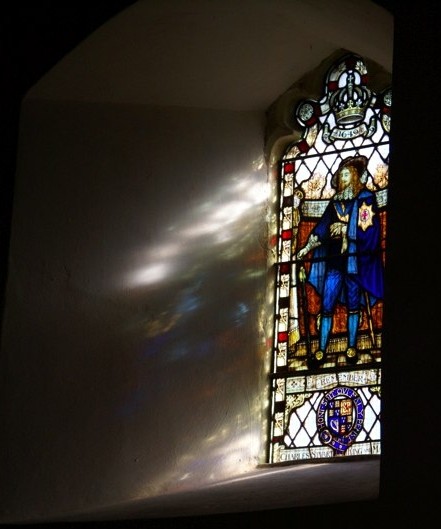


-
When I was in high school I used to work for a stained glass company repairing old church stained glass windows. It was fun once you get over the initial fear of working with glass. Although carrying a 4x8 sheet of glass up stairs can be a bit nerve wracking. The old windows had very deep textured groves and in some cases the clothing etc on robes and figures was also cast into the glass as apposed to painting it on as is common today. I've seen stained glass windows designed and made by Tiffany they were beautiful. Here is a hint to add realizm don't make each piece of glass in the same plane some glass is thicker than others and with the fabrication process it's impossible to get all of the pieces to lay flat in the same plane. and the cane is soldered by hand at each joint making each joint unique. Pluse the irregularity of each piece of glass in a slightly different plane contributes to the unique specularity and reflections / refractions from the light giving it a hand made look. Good luck to those that take this challenge I'd love too but the mountain of paperwork on my desk has a different plan for me.
-
Stained glass, that's a great challenge idea !
I've begin with a simple model, a kind of middle age room, with a simple window.
The first render is a a quick try with Vray and a simple area light. The glass looks good to me, but there's no interesting shadowing or caustics...
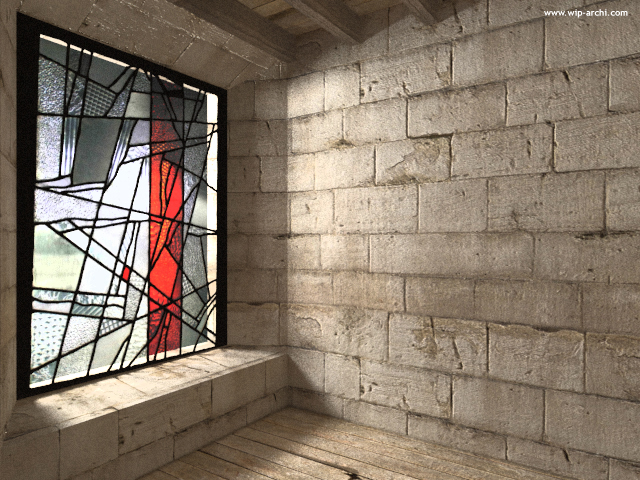
... So I switch to Artlantis, and the result is more convincing :
And a black and white version, just for fun...
It's not, at this point, a physic simulation of the light behaviour, but just a visual research...So I will give it a try with indigo and see what I can get...
-
awesome way to start this challeng, mr wip... those look awesome.. glass is def convincing.
-
I like the Artlantis one best, good start Mr WIP.
-
yeah the artlantis one looks great, is it easy to use?
-
hi solo, i can't believe you just posted this!
 for the last 2 weeks i've been thinking about posting a question for YOU on this topic! i' working on a design that two of the spaces is totally about the stained glass window. right now i'm just about to finish the house & site, interiors come next. i will post mine in 3 weeks (if it looks right!)
for the last 2 weeks i've been thinking about posting a question for YOU on this topic! i' working on a design that two of the spaces is totally about the stained glass window. right now i'm just about to finish the house & site, interiors come next. i will post mine in 3 weeks (if it looks right!)hi MrWip, that looks great!! please post more!
i have a question for you- is the glass panel made of several faces in sketchup or is it one face with transparent image? the reason i'm asking is that my tests showed that when it's different faces for different colors, podium can work too, but if it'a transparent texture or image the shadows don't have colors in podium and artlantis is able to produce colored light. but if the design is intricate, and not a cad file, it will be a lot of work to trace it on a face... thanks again!!

-
Off to a great start Mr Wip.
-
Thanks you all for all your positive comments, It's really good to share with a community!
So, about the render, here is the trick:
-The glass is made of one high resol pict of a Stained glass.
-The structure have been redraw over it to have a solid element casting shadows.
-Vray does not cast automatically good caustics, or colored shadows linked to the color of the texture...
-On the other hand Artlantis does, so I've switch to it, and after a bit of photoshop adjustment it gives this. (actually Artlantis 2 present some graphic bugs with complexe interactions, like a smooth "caustic" shadows on a reflective surface with bump for instance... so photoshop is necessary in that case)And, Oli, yes, it's really easy to get a grip on it. If you want to take a look, I've made a first tutorial of the basis here : http://forums.sketchucation.com/viewtopic.php?f=18&t=19361
My technic does not work for unbiased renderer (at least not with indigo ) and I will have to separate and texturize each peace of glass if I want to get something out of it...
-
Quick first try, need to tweak a few settings still.
SU and Vue (no post editing)

Used a volumetric quadratic spot with dust enabled, low radiosity atmosphere.
-
MrWip -
I wonder if there is a way to combine the two. The walls and floor are beautiful in the V-Ray version but the light on the walls and the window sill is more convincing in the Artlantis version.
Whatever, you've sure set the bar pretty high! Beautiful work. -
Mr Wip, apart from great looking stained glass, the roof and wall textures are fantastic!
Where are they from?
Being a rendering noob, tell me, is this texture added in SU then rendered in your software? -
WIP: nice tutorial, thanks a lot
 . think ill have a go with artlantis first then vray.
. think ill have a go with artlantis first then vray. -
Ok, now let's try to improve the effect...
I modified the glass panel, applying a single texture to each element, making it able to be taken into consideration by other render engine.
I'done two test in Indigo, and here are the raw images, whithout any post process. I took about 20 minutes on an octocore to get that result (resol 1822x1031 originally).
First : same configuration of element than before...the caustics look a bit the same than in Artlantis.
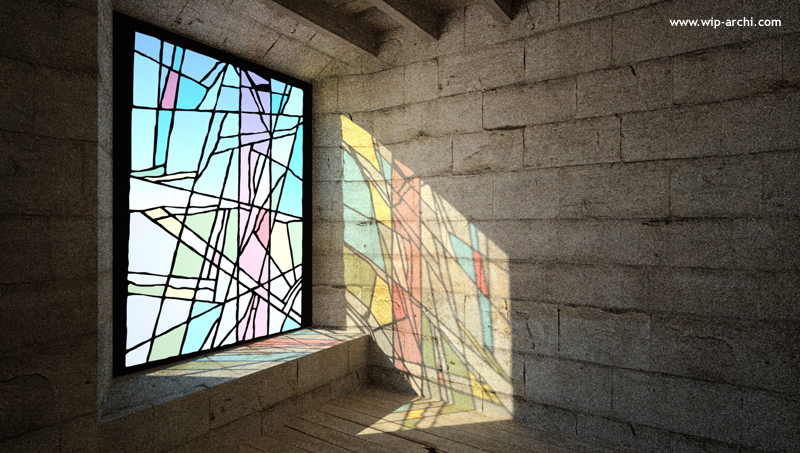
Second : I've increase radically the thickness of the glass (around 10cm on this one). The resulting lighting is interesting to observe...The caustics are far more effective, and some glass element are no longer transparent due to the too important thickness.
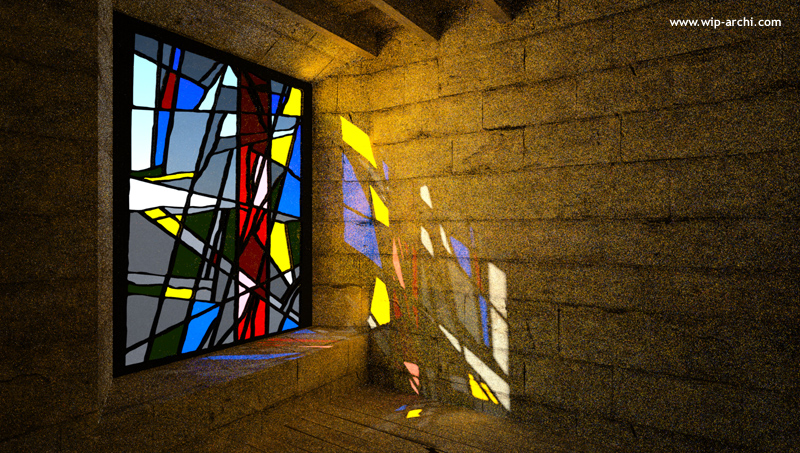
Now I've to figure out why indigo just show the color and not the texture of my glass panels...
-- Dylan, the ceiling and wall are simple CGtextures images, apply has a texture, with a bump. Here is the pure skp image, so you can see how it looks without effects
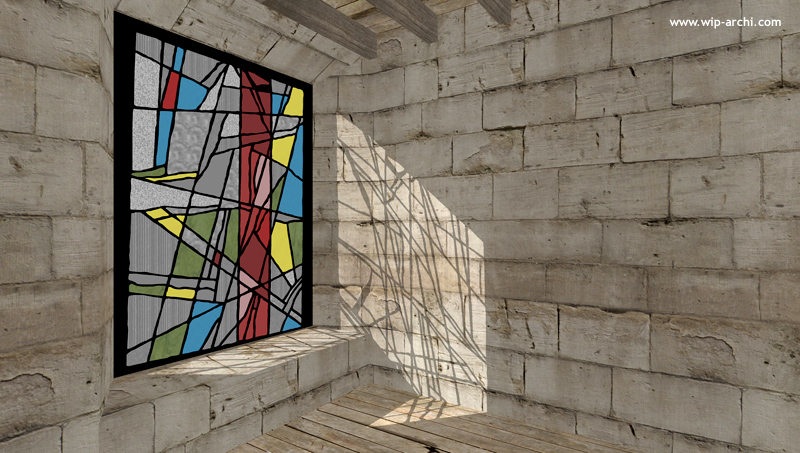
-
Damn these displacement activities!

Attempt using LightUp. (Lighting time: 11 seconds)
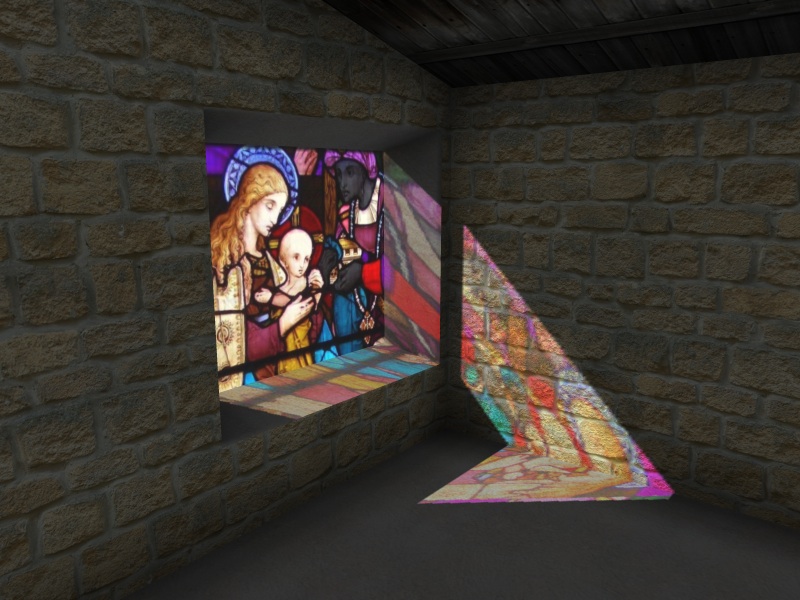
-
whats the difference between artlantis studio and artlantis render?
also do you have to have sketchup pro or will free version work (mac)
-
@mrwip said:
Dylan, the ceiling and wall are simple CGtextures images, apply has a texture, with a bump.
Thanks
-
Oli, The Studio edition include animation tools that the render does not have, that's the only difference... so if you just want to make pictures you don't need the studio.
Adam, here is a try for you (the other one can also enjoy, of course!). It took about 1 minute with a 10x resolution, and the result is a simple screen grab without postprocess (appart from the watermark...) so, it's fully real time, as you like to precise
 (and you're right to do so!)... You can check the raw sketchup on the post above to see the lightup efficiency on that scene (the 'caustics' are a bit weak, but the overall sensation is really close to a real render)
(and you're right to do so!)... You can check the raw sketchup on the post above to see the lightup efficiency on that scene (the 'caustics' are a bit weak, but the overall sensation is really close to a real render)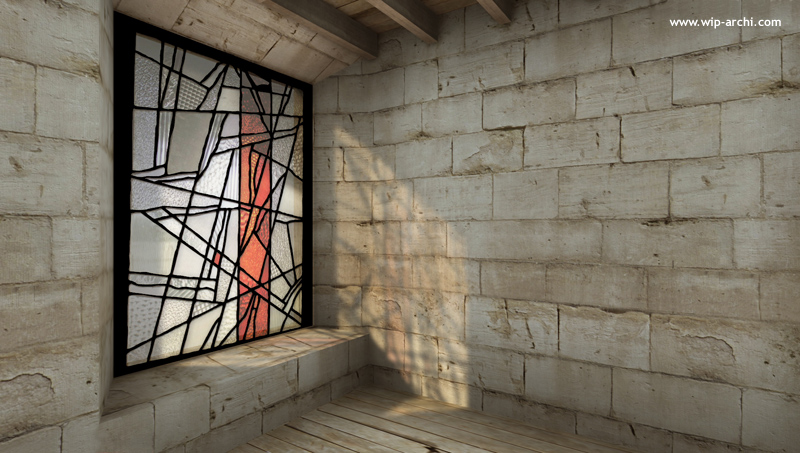
-
Whoa. Nice result!
And such an elegant model too.BTW The next version of LU has a slightly different sunlight model which results in much bolder caustics.
-
solo, that's beautiful!! how did you get the shafts of colored light? have you tried to do this in Podium also
Advertisement







